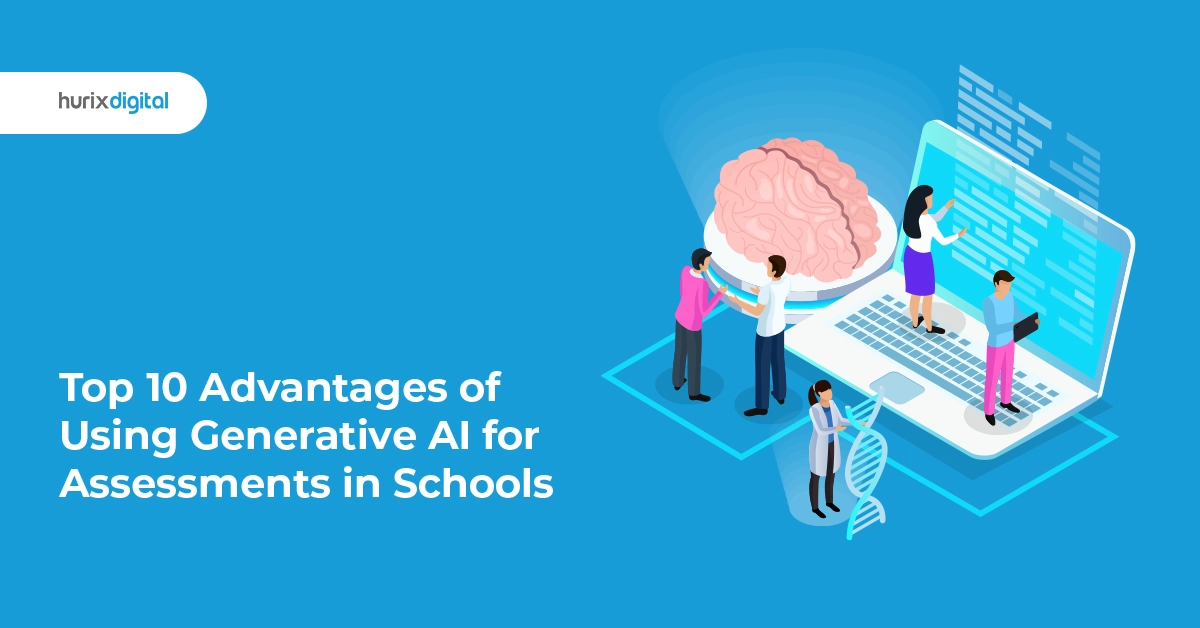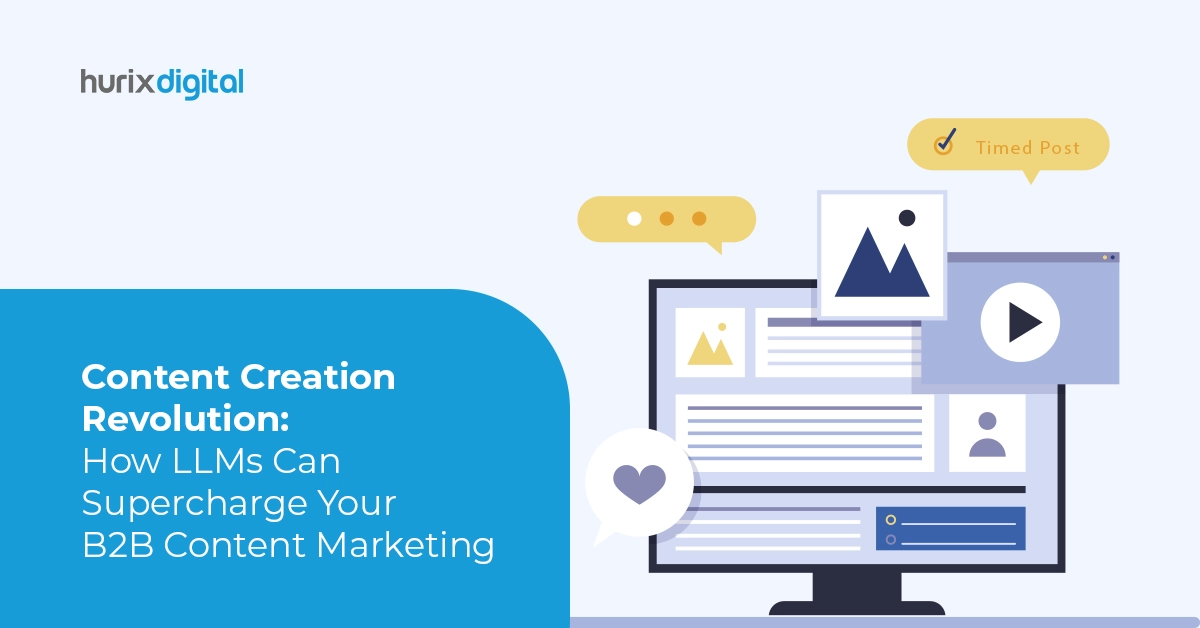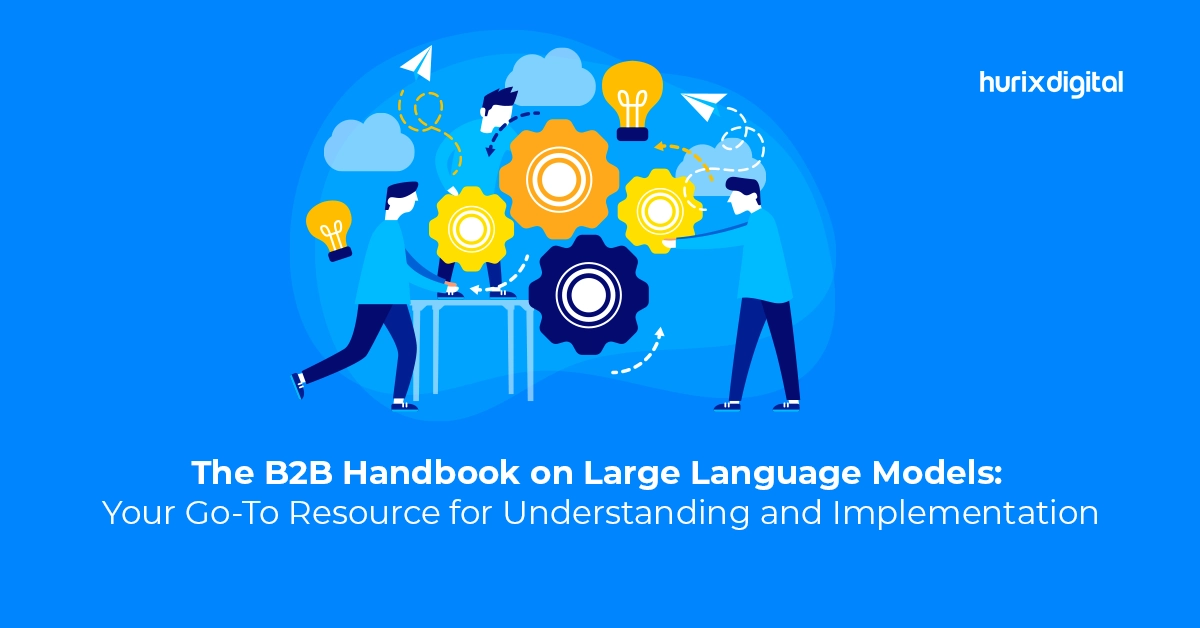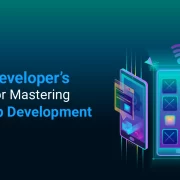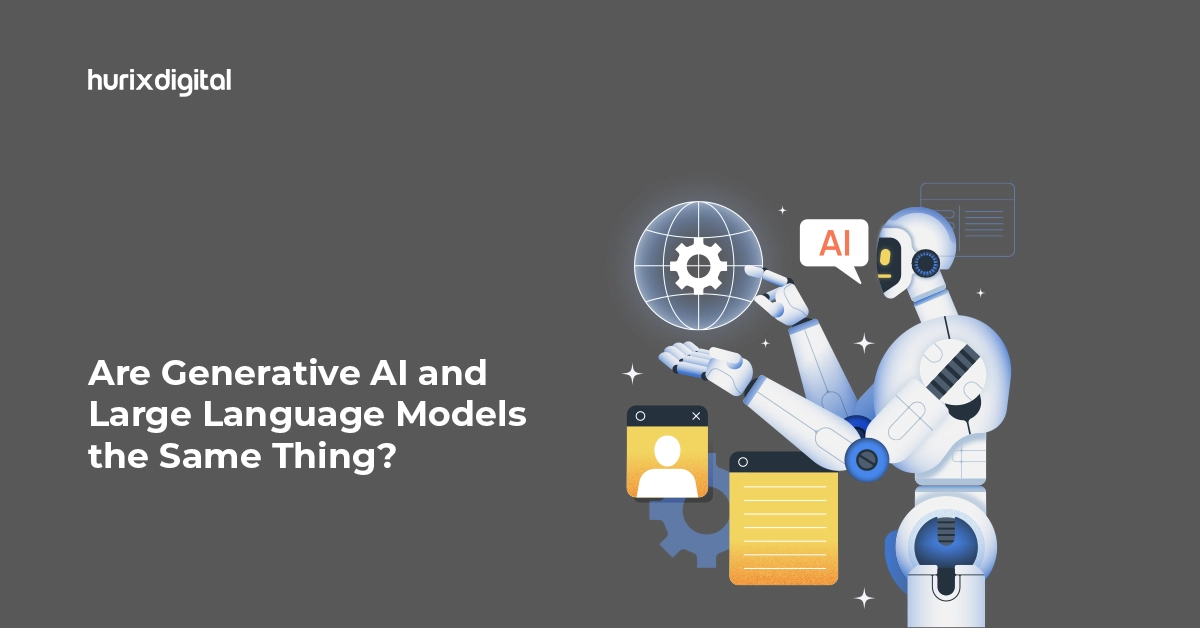
Are Generative AI and Large Language Models the Same Thing?
Summary
Explore the differences between generative AI and large language models. This article clarifies their distinct roles and applications in artificial intelligence.
Generative AI & large language models represent the cutting-edge frontiers of artificial intelligence, captivating the attention of industries worldwide. These systems are purpose-built to craft content that resonates with individuals.
Generative AI exhibits versatility in producing images, texts, music, and various content types based on learned patterns, while large language models specialize in generating textual data. In essence, both technologies excel at processing and generating natural language, enabling coherent and contextual responses to stimuli.
Furthermore, both generative AI and large language models are poised to revolutionize the landscape of artificial intelligence and automation.
Read on as we take you through how these innovative technologies differ and converge, providing a comprehensive understanding of their roles in reshaping the realm of artificial intelligence.
Table of Contents:
- What Does Generative AI Refer To?
- Types of Generative AI Models to Explore
- Examples of Generative AI Models
- Large Language Models: A Brief
- Examples of Large Language Models
- Exploring the Contrast between AI & Large Language Models
- Wrapping Up
What Does Generative AI Refer To?
Generative AI refers to any machine learning model capable of producing fresh and unique output. Its algorithm and machine learning techniques allow it to create unique and high-quality content such as text, images, music, and videos.
Earlier AI models were only capable of doing specific tasks. Generative AI can generate creative content, problem-solve, and even create artistic pieces. However, these models are limited to producing content because they predict a new data point. It is like someone who can make further predictions after studying and analyzing training data.
Generative AI includes training models on large datasets; once trained, these models can generate new content by choosing samples from the learned distribution or creatively repurposing inputs.
Also Read: The Importance of Accessible GDPR Training for Employees in 2024
Types of Generative AI Models to Explore
Here are the major types of generative AI models, each distinguished by its algorithm, techniques, and applications:
1. VAEs (Variational Autoencoders)
VAEs include models that create new samples by reversing data encoding into a lower-dimensional space. They can generate images and texts. Apart from that, VAEs are also utilized in analyzing and understanding data representations.
2. GANs (Generative Adversarial Networks)
Generative adversarial networks are developed to mimic human creativity and produce unique and original content. It comprises two neural networks: one generates data, and the other evaluates its accuracy. They are mainly used for creating images and enhancing data.
3. Autoregressive Models
These are models used to predict the next element in a sequence by measuring each element from previous inputs. It uses statistical techniques to find the correlation between elements in a sequence. The famous examples of autoregressive models are LSTM and transformer-based models.
Examples of Generative AI Models
Here’s a snapshot of some notable examples of how generative AI models have made a significant impact in various domains:
- Generating Images: These generative AI models can create high-quality images of faces, objects, and other images you want.
- Generating text: Generative AI can create scripts, articles, poems, and even code. They can perfectly narrate the structures of literature and grammar and produce compelling stories for the targeted audience.
- Generating Music: These models can analyze the style of great composers like Thomas Newman, Maurice Jarre, etc. They can develop fresh pieces of music such as rhythms, melodies, etc.
- Creating Personalized Content: AI has memory and understanding. It can learn your favorite music and writing styles and generate personalized content that is ideal for you. You can create a poem or a playlist, anything you want.
Large Language Models: A Brief
Large language models are deep learning models that use natural language processing (NLP) to generate human-like creativity and response in test content. LLMs are mainly designed for producing language-related content and understanding and generating text.
These models incorporate memory units to help them understand and remember the information. This feature allows them to generate accurate and relevant responses. LLMs can generate text, whether email, newsletter, or business conversation with a prospect.
Examples of Large Language Models
Below are examples of prominent large language models that have played a crucial role in advancing natural language understanding and generation:
- GPT-3: Generative Pre-trained Transformer 3, or GPT-3, is a prominent example of a large language model developed by OpenAI. It generates appropriate text-based output and is widely used worldwide for intelligent chatbots’ content generation and language translation.
- GPT-4: This is an advanced and premium version of GPT-3. It has advanced memory and contextual understanding. It is a multimodal language model to enhance the quality of text-generated content. The model is already the most advanced in generating English content and is continuously evolving.
- PaLM2: Pre-trained AutoRegressive Language Model 2 is mainly designed for better language understanding and generation. The model is known for its text, completion, and language modeling capabilities. It also powers the Google Bard chatbot.
Exploring the Contrast between AI & Large Language Models
Generative AI encompasses a wide array of content generation beyond text, while large language models (LLMs) excel primarily in generating text-based content.
Below are the major distinctions between AI and large language models:
1. Content Creation
Generative AI can produce all types of content beyond text, such as images, code, and music. They have vast applications in virtual reality, content creation, and design.
Meanwhile, LLMs are mainly designed to generate text-based content, such as emails, newsletters, conversations, etc. They can do textual analysis, language translation, text generation, and related tasks well. Their application includes automated customer care, human-like text content, and chatbots.
2. Usefulness
Generative AI is used to produce original and unique content. It can generate images, compelling stories, and even music for the audience. It tries to mimic human creativity, while large language models are created to generate text-based content.
Because they incorporate large volumes of text data, these models can carefully comprehend grammar, sentence structure, and context. They are essential for producing text-based applications like chatbots and content.
3. Training Data
Quality and diverse training data are needed to train generative AI. This high-quality data ensures creative and top-notch results. On the other hand, large language models require vast amounts of text data to generate high-quality results.
4. Development Expertise
Generating AI models can be challenging, requiring machine learning and domain knowledge expertise. For text-based jobs, LLMs, particularly pre-trained models, are more accessible and usable.
Although generative AI and LLMs have different motives, some common grounds remain. All LLMs are a type of generative AI. They use the power of generative AI to produce results based on previously learned patterns. Similarly, LLMs can be used in generative AI to provide prompts for output.
Also Read: 6 Unique Tips for Blended Learning Solutions in Compliance Training
Wrapping Up
Generative AI and machine learning go hand in hand in terms of transforming various industries and applications.
The collaborative synergy between generative AI and large language models (LLMs) has led to remarkable advancements in natural language processing and understanding.
If you’re aiming to enhance your platform using generative AI, automation, and machine learning, Hurix Digital can help. Our expert team is ready to assist you in scaling, improving performance, and optimizing costs.
Contact us today to get started!

Performance, Results, Growth, and Life-Long Learning define my professional life. I am passionate about making workplace learning planful, purposeful, and impactful. I take pride in partnering with clients and bringing them the best in learning design and creating solutions that address business challenges.
